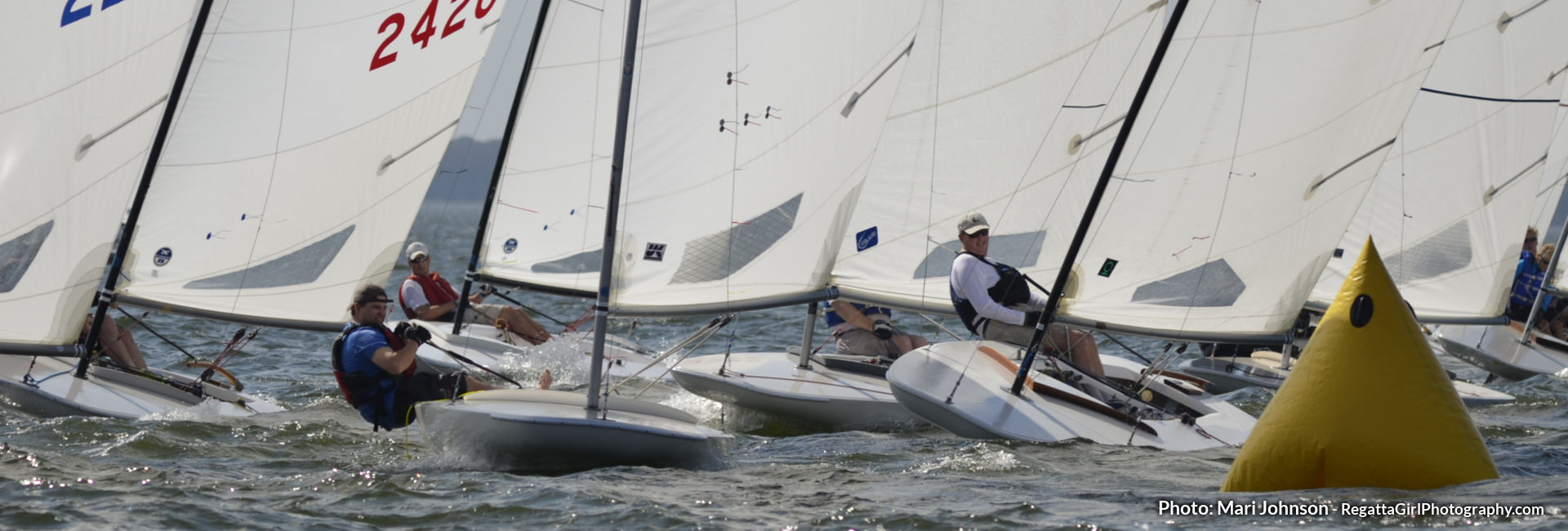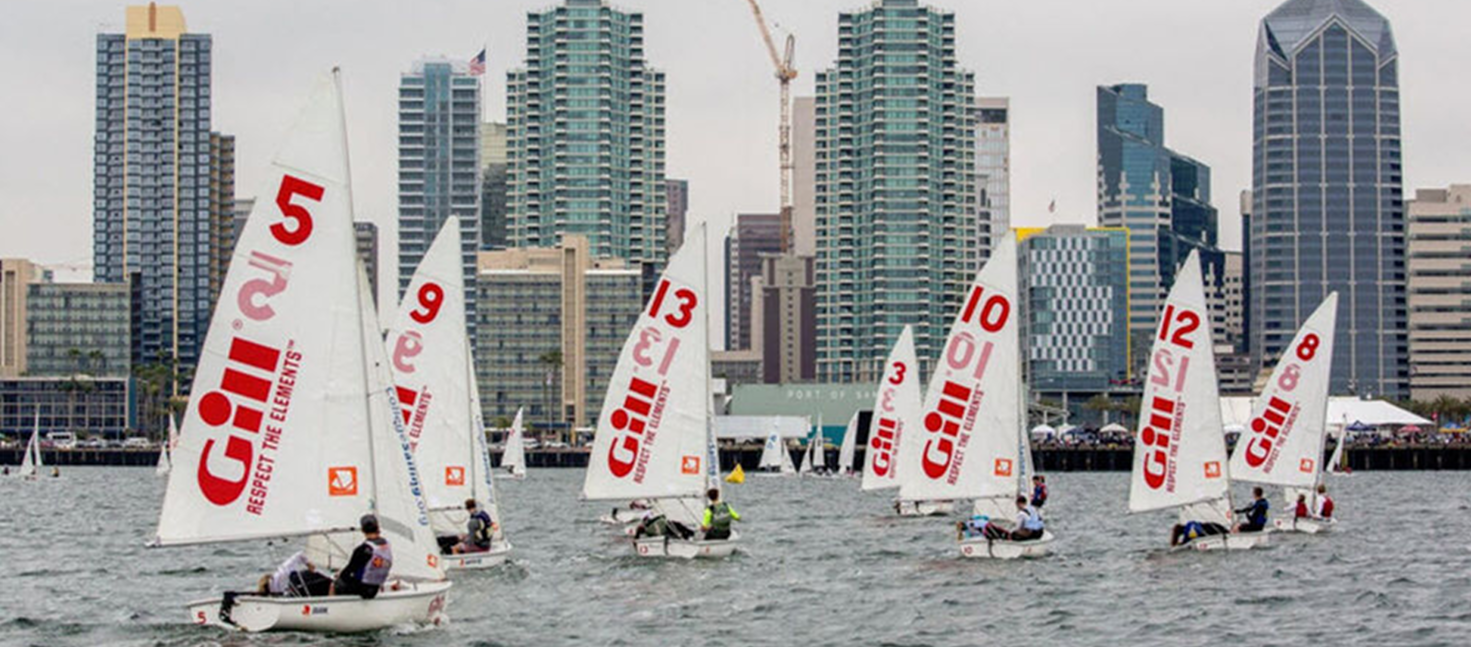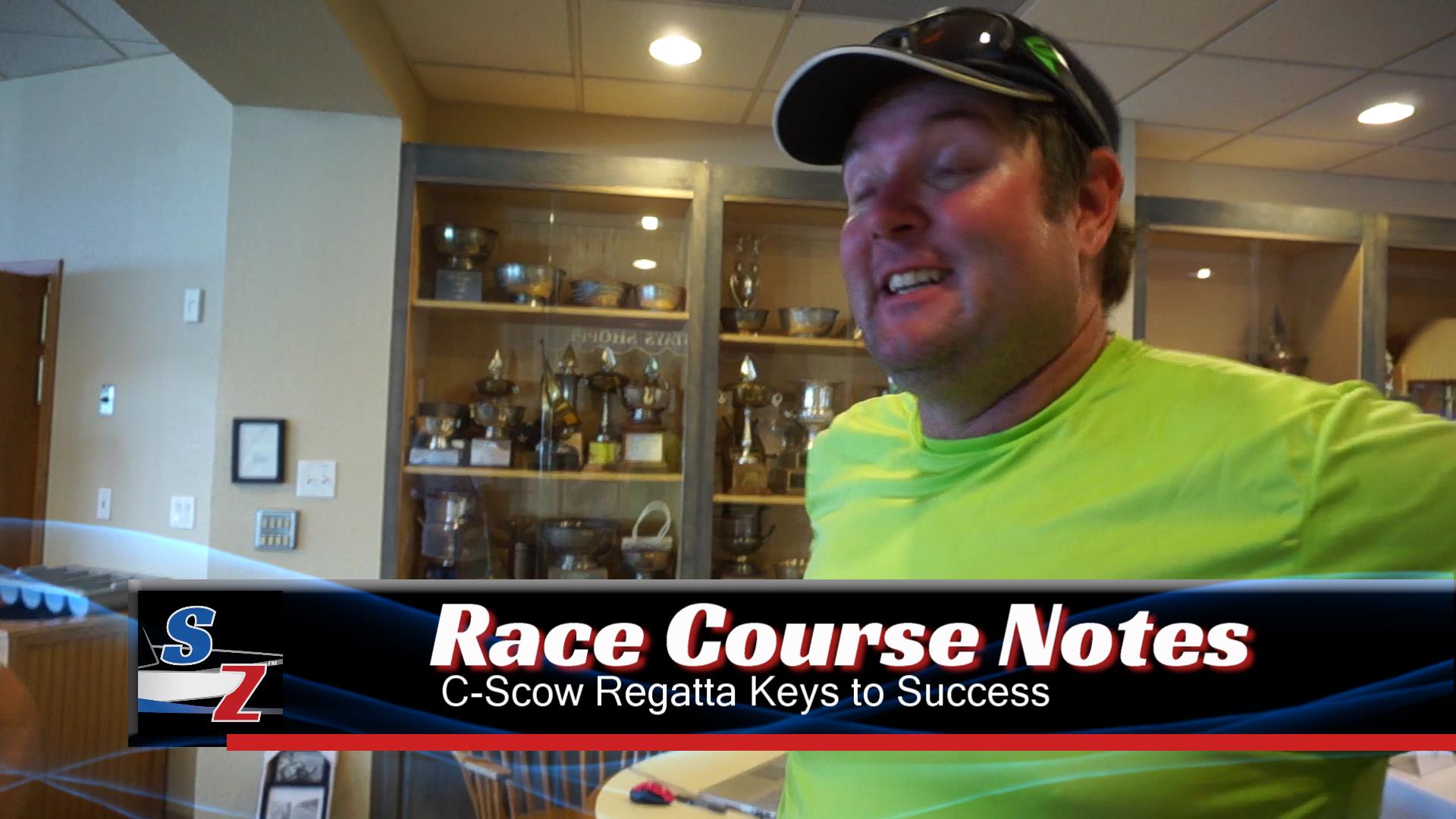Regatta Aha! Insights
The 2017 MC Scow Midwinters (Lake Eustis Sailing Club, March 9-11) had 63 competitors from 13 states and Canada. The MC class is fortunate to have many strong sailors that are willing to share their knowledge. Here are some great regatta success insights from four of the top finishers:
- Rob Seidelmann (1st)
- Bill Draheim (2nd)
- Ron Baerwitz (4th)
- Ted Keller (5th)
Overall Keys to Success
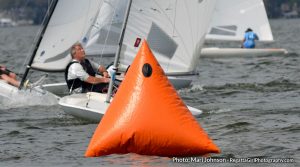
Rob Seidelmann: The biggest key was getting off the line with a clear lane both below you and above you. This made it very easy to either tack on the first header or foot towards the next shift. Sounds too easy but it’s really the hardest thing to get off the line clear. When you do this, you almost put yourself in the top 10 already and makes it easier to get up to the front of the fleet.
Bill Draheim: The keys to success were the same as always. You need to get off the line, stay in velocity and stay in the lifts. Some percentage of the time these things won’t happen, but the winner has these things happen the most.
Ron Baerwitz: Every time I focus on finding a clear lane off the line I do well. It’s not easy to forgo the favored end to gain more space. But here is the truth: the more shifty the venue the less the favored end really matters.
Ted Keller: The key factor was consistency, just like usual. If you can put together a string of top ten finishes, or even better, add in a few top 5’s, you are going to be in the front group and right in the hunt for the regatta. To me, the important ingredients are: solid straight line speed; strong boat handling (good tacks and jibes and maneuvers in traffic), and getting off the starting line on a consistent basis.
Ron and Ted: Fight for every point. Everyone ended up in the back at some point. The key was to not give up. Get back to basics by sailing the lifted tack and winning your side of the course.
Strategy in Shifty Conditions
Rob: Lake sailing is very, very tricky and also very lucky! That is the truth, and you will find some of the best sailors on the wrong side of the lake at any given time and will see it in the results. I try my hardest to always sail on the lifts, because the wind will shift back 90% of the time, unless one side of the course has a consistent shift to it. Puffs also are huge on lakes. I always sail for the dark water or puff. I lost the first race because I wanted to cover the majority of the fleet and didn’t sail towards a black puff and the winner of the race did.

Bill: Seeing the shifts is not hard if you have your head out of the boat and looking upwind. Race 1 the lead boats were still well in front, I was back in around 6th but used the boats in front as wind indicators. Having more boats in front of you means more wind indicators. Use them!
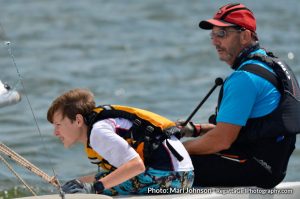
Ron: I kept an eye on pressure on the water and tried to sail the lifted tack. With that said, it was not so easy to predict the large shifts that happened. When I gained advantage over large portions of the fleet I would consolidate to solidify my position over the greatest numbers. Ultimately that cost me points on 3 occasions.
Ted: Try to keep things simple: sail for the pressure on the water, then sail the lifted tack, and keep the bow pointed at the windward mark. This keeps you centered up on the course for the most part, and able to benefit from shifts coming from either side. On Day 2, it was important to avoid chasing the pressure all the way out to one side of the course. That took any options away and as soon as you’d feel the pressure lighten and the lift start to fade, you would know the other side of the course is going to come rolling in and boats you thought you had well in hand were going to sail right past. Though it’s tricky, that is the fun part of lake sailing. No one ever really knows what the wind is going to do. To play the odds and position yourself vs. the fleet where you are likely to gain some but less likely to lose a lot, that is the balancing act we continually aim for.
Related Content:
Sail the Lifted Tack – How and When?
Sail a Smart First Beat
Sail Fast: Sail Trim and Angle of Heel
Rob: Sail trim is so different on each sail. I don’t care what sail you use, but you must learn how to make your sail go fast! No sail out of the box is as easy as just pulling it in and going fast! I have been sailing the same sail for seven years and can close my eyes and set it up for different wind conditions. I love a loose foot to get more power down low but that might not work on all sails. Another key point is when you’re going slow, you must change something with your trim. When I am slow, I may ease my sail a few inches and get the boat up to speed and then pull it back in to where I think it should be.
Rob: Heel of the boat is critical. Jeff Annis told me that when I first started and I have never forgotten that. On the MC, it’s about 15 degrees and I try my best at all cost to keep that heel and never sail flat. Upwind, ease-hike-trim is the best way to keep that angle or pinching sometimes works but tends to slow you down. Hiking hard when its windy is very important and is very, very fast.
Bill: The MC is a great boat. It has all the de-powering control lines at your fingertips. Day 1 was a post-race Advil day for sure. I am continually pulling on the cunningham, vang, outhaul, and easing the sheet and traveler as the wind comes up. I reverse this stuff in the lulls. One thing I think I do more than most is to drop the traveler all the way down when I’m overpowered. You need to realize the easing and trimming I just described happen non-stop during the race. I used my rowing machine for three months before the regatta; maybe that helped a little.
Related Content:
Tag: Bill Draheim
Top Sailing Fitness Principles & Exercises
Pre-Race Routine
Bill: With 10-15 minutes until the start a lot of boats are sailing upwind, I like to stay downwind in that starting area and observe the others who head upwind. I get a broader picture of the course this way. Inside of 5 minutes I like to sit on the windward side of the line. I’m trying to figure out where the velocity is coming from and when it will get to us. I want to start in a spot that will get me to the next “piece” of velocity. Some people say they can tell if the approaching velocity is a lift or header. I’m not one of them. I simply want to get in the velocity then be on the proper tack when I get there. There is no tactical value in reaching back and forth behind the line while the starting sequence is on.
Sailing Fast in Waves
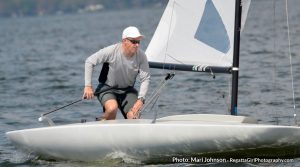
Ted: The biggest thing in bigger breeze and waves is to be sure you are not pinching. Hike hard and use the controls to depower: vang and cunningham on hard, traveler down 4 to 6 inches as needed. Then put the bow down and drive the boat ‘fast forward’ through the waves. It is important not to be caught sailing the boat too thin so I really avoid feathering the boat into the wind when overpowered. When pinched and going slow, you try and bring the bow down only to get hit with the next puff and blown up on your side. That Yo-Yo effect has to be avoided to maintain a constant heel angle, so it’s really key to not be pinching.
Related Content:
MC Scow: Upwind Sailing in Waves
Pinching and Footing in Waves
Skill Building
Rob: Remember that all the best sailors have sailed hundreds if not thousands of races! So, they have seen everything that comes to them and it becomes second nature. Rising up through the fleet takes a lot of hard work and focus. I keep a notebook of everything that happens in regattas over the years and love to go back and read what worked and what didn’t. This is a great way for novice sailors to improve.
Related Content:
Sailors Helping Sailors
Will you share your knowledge with your related Comments below?

